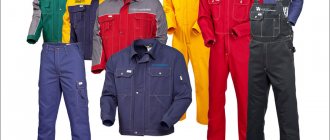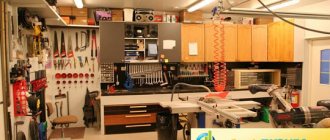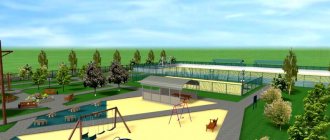Hi all!
According to official statistics, more than half of polymer pipes are produced from polyethylene worldwide. In Russia, polyethylene occupies an even larger share of this market. And every year the numbers increase, so the production of polyethylene pipes is both a proven and promising business.
I will briefly and clearly analyze the technological, legal, and financial features of polyethylene production. I’ll tell you about the market leaders, pitfalls, and give approximate lists of equipment and staff needed to start your own business.
Main characteristics of polyethylene pipes
There are 2 main types of polyethylene:
- HDPE – low-density polyethylene. Used for the manufacture of pipes, hoses, fittings, and household containers.
- LDPE – high-density polyethylene. Mainly used for the production of flexible packaging and bags.
To produce polyethylene products, you need a special machine - an extruder. In it, the loaded raw material is softened under temperature and pressed into the hole, forming the final appearance of the product. The brand and scope of application of pipes is determined by the following characteristics:
- operating pressure;
- operating temperature range;
- strength;
- wear resistance;
- resistance to aggressive environments (soil, groundwater).
What are HDPE pipes
HDPE polyethylene pipes are pipes for clean, technical and contaminated water, as well as chemically active and viscous liquids, made from ethylene polymerized under low pressure. Depending on the number of bonds and copolymers in the composition, there are three main types of polyethylene that are used for the production of pipes: PE 63, PE 80, PE 100. The material has different production technology and physical properties, which determines not only the scope of application, but also the cost .
Polyethylene PE63
First generation polyethylene with a polymer chain of ethylene alone. It has a minimum long-term strength (MRS) of no more than 6.3 MPa and fragility that increases with service life. Such a HDPE pipe is today used as a cable channel when laying cables and sometimes for drainage of difficult soils.
Polyethylene PE80
Widely used today is second-generation polyethylene, produced with the inclusion of butene or hexene in the molecular chain. It is elastic, resistant to cracking, and is relatively lightweight, its MRS = 8.0 MPa. HDPE PE80 pipe is used in the installation of free-flow and low-pressure sewerage systems, organization of pressure water supply in a small area, and the plastic itself is also suitable for the manufacture of connecting elements (bends, fittings), casings for cable products and even storage tanks.
Polyethylene PE100
Third-generation polymer, heavy, elastic, high-strength, used for laying gas mains and water-pressure collectors, including water supply and sewerage. MRS = 10.0 MPa. It is a biomodal polymer, consisting of long- and short-chain molecules and the targeted introduction of a comonomer into the high-molecular part, which makes it possible to create an elastic shell for a strong crystalline bond formed by a low-molecular chain. It is also used to make parts of fittings for the installation of polyethylene pipes and elements for air ducts.
Most manufacturers today offer only polyethylene pipes of the PE80 and PE 100 brands. This is due to the low popularity of PE63 due to its technical properties and the free replaceability with PE80 if it is necessary to use such products. In terms of price, PE 100 is more expensive, since its production requires more raw materials.
Areas of application, advantages and disadvantages of polyethylene pipes
In addition to main installations, HDPE pipes are used for underfloor heating systems, drainage systems, waterproofing of thermal lines, and transportation of chemically aggressive liquids. Their main advantages:
- Wide operating temperature range (-60…+60 °C).
- Environmental friendliness. Polyethylene products are non-toxic and do not have a harmful effect on the environment.
- Anti-corrosion qualities.
- Resistance to mechanical stress.
- Long service life (up to 50 years).
- Elasticity (easy to bend).
- Easy to install.
- Convenient transportation and storage (stored in rolled-up coils).
- Lightweight polyethylene pipes compared to metal counterparts.
- Low cost compared to other materials.
At the same time, there are several properties that limit the use of HDPE:
- Instability to UV rays, therefore, for the operation of polyethylene pipes in an open sunny area, additional protection is required.
- Not used when installing fire drainage systems.
- At very high temperatures (from +80 °C), the polymer softens and deforms.
- Doesn't fit well with products made from other materials.
Advantages of HDPE pipes
The popularity of any product is determined by its characteristics. The advantages of water, gas supply and sewerage systems made from HDPE are:
- affordable price: the cost is lower than analogues made of steel and cast iron in terms of service life;
- long service life – the estimated service life is 50 years;
- resistance to corrosion, chemicals, abrasives;
- do not require cathodic protection;
- light weight, ease of transportation (especially for small diameters supplied in coils), storage, installation;
- high bending radius (up to 20 diameters), which allows you to bypass difficult areas without connecting elements;
- adaptability to complex soils (bulk, subsidence);
- maintaining working clearance, increasing wall smoothness with use;
- non-susceptibility to the formation of biological films inside;
- no impact on the quality of the transported liquid;
- resistance to expansion of frozen liquid, do not burst in the cold;
- Impact resistance, installation permissible down to -40C0.
An important advantage is ease of use when restoring existing pipelines. The polyethylene pipe is simply pulled inside the burst cast iron or steel pipe, which significantly reduces labor costs and costs, and also guarantees quality.
Profitability of plastic pipe production
With a well-designed business process, polyethylene production should reach self-sufficiency within 2 years. At the very beginning, it is important to determine the product matrix, positioning, and target audience. For example, some companies focus exclusively on the end consumer and private housing construction.
Investments and income
As a rule, starting capital for polyethylene production starts from 8 million rubles. Equipment is purchased, production premises are rented, personnel are hired, working capital is generated, and a safety net is created for the first six months. The profitability of an enterprise depends on the region of location and the presence or absence of a competitive environment. According to statistics, profitability ranges from 2 to 20% of turnover.
Technology for the production of polyethylene pipes
The pipe manufacturing process is based on the extrusion method . The essence lies in the homogenization of raw materials in order to soften them in a special device - an extruder.
With the help of equipment dies, pipes are formed to a specified diameter and subsequently cooled.
In the first step, the material is placed into the extruder receiving device. Next, the raw material is moved into a preheated cylinder. Gradually, the material is transferred to the hottest parts of the cylinder, slowly warming up.
Thus, the cylinder consists of three components: a feeder, a raw material compression zone, and a dispensing zone. The high quality of the extruder die is important, since the size of the finished pipes depends on it. It must be maintained at a fixed temperature.
After the raw materials pass through the cylinder and the blanks are obtained, they are placed in a container for vacuum molding under pressure. The pipes are then removed from the cooling chamber and immediately transferred to the conveyor to prevent its deformation.
At the final stage, the pipes are cut and laid into prepared coils.
For cutting, special saws or cutters are used (depending on the selected diameter).
Recruitment
Before starting production and hiring a team, you need to find premises with an area of at least 200 m2 with ceilings of 10 meters. This is due to the dimensions of the equipment, the need to store polyethylene material, the installation of additional ventilation, utility rooms and “cabins” (places for eating and resting).
To service a standard line you will need the following command:
- 6 workers, if production operates in 3 shifts, i.e. 2 people for each shift;
- 2 machine operators;
- 1 technologist;
- 1 accountant;
- at least 2 auxiliary workers who can work 8 hours a day;
- 2 cleaners;
- 1 driver;
- at least 1 manager.
A marketer is desirable - he will be involved in the promotion of polyethylene products on the market.
Room
First you need to rent a small factory or part of an industrial premises outside the city. Mandatory conditions: good transport accessibility, convenient access roads, area of at least 200 square meters. m .
There must be 380 volt electricity, sewerage, and water supply.
It is important to provide several zones separated from each other:
- manufacturing facility;
- warehouse complex;
- bathroom;
- premises for employees.
Considering that the pipe production line includes tall and heavy equipment, the ceiling height must be at least 10 m .
The workshop must be equipped with powerful air conditioners and fire protection systems. The storage area should have normal humidity and room temperature.
Scheme for obtaining a certificate of conformity
Depending on the product range, certification documents are obtained that confirm the quality of the manufactured products. To obtain a certificate, you must contact the authorized bodies with an application and a mandatory package of technical production documentation. The application can be submitted by a manufacturer or a distributor.
Before issuing a certificate, polyethylene products are checked for compliance with quality in accordance with GOSTs. Inspection tests are regulated by state regulations and standards.
Price range of cross-linked polyethylene pipes
Depending on the outer diameter, wall thickness, and the presence of special processing, the price of polyethylene pipes (average) fluctuates over a wide range.
Products used for water supply networks are indicated by several blue stripes along the outer surface, are manufactured in accordance with GOST 18599-2001 and can withstand a maximum temperature of 40 ° C, a working pressure of 6-16 atm. Prices vary from 66 rub./m. (d 63 mm) up to 29 thousand rubles/m linear (d 1200 mm).
Pipe products intended for the transportation of liquid gas (GOST R 50838-2009) under a pressure of 3-12 atm are marked with longitudinal yellow stripes. The price range for this category is within 210 rubles/m2. (d 63 mm) – 16.5 thousand rubles/m linear. (d 1200 mm).
For technical PE pipes, the addition of recyclable materials is allowed; they are produced according to the manufacturer’s specifications. Due to the mixed composition and insufficient weldability, use is limited to the transportation of process water and cable laying.
Necessary equipment
A significant cost item for in-house production is equipment. Prices for it depend on the country of origin, the functionality of the machines, as well as the time of their use if used machines are purchased.
To produce polyethylene water and gas supply pipes and cable sheaths you will need:
- pellet dryer;
- forklift;
- extruder;
- vacuum calibrator;
- bath for cooling workpieces in it;
- conveyor;
- coronator;
- planetary saws;
- marker;
- automatic stacker;
- automatic control system.
Equipment for the production of
Based on their operating principle, extruders used in the production of polyethylene pipes are divided into screw, disk and combined.
Most often, in the production of low-density polyethylene products, screw extruders of various designs are used. The main element of this kind of extruder is an Archimedes screw (screw). The operating principle of such extruders resembles a conventional screw meat grinder. Extruders of this type can have one or more screws operating with co- or counter-rotating.
Disc extruders are relatively rare in modern plants. They are divided into single-disk and multi-disk. The operating principle of this type of extruder is based on moving raw materials by adhesion using special disks. The advantage of this type of extruder for the production of polyethylene pipes is good mixing of granulated polymer raw materials. The disadvantages include: low pressure in the area of the working head (die), which does not allow obtaining products with a given precise geometric shape and high strength characteristics. In addition, disk extruders are characterized by structural complexity and, as a result, a higher price.
Extruders, used as a working body with a screw and a disk part, are usually called combined or worm-disc. This type of extruder allows for excellent mixing of granular polymer raw materials, in our case polyethylene. They are used to work with polymers characterized by low viscosity and elasticity.
In addition, extruders can be specialized and universal, two-stage or single-stage, differ in the number and direction of rotation of screws, with or without a degassing zone. Every year new engineering solutions appear, production technology is improved and the variety of models offered increases.
Prices for lines for the production of polyethylene pipes start from RUB 3,500,000. A standard line for the production of HDPE pipes usually consists of the following equipment:
- automatic loader of granulated polyethylene and bunker-dryer;
- automated control system for current production processes;
- extruder of one type or another;
- removable dies of various diameters;
- automated vacuum polyethylene pipe former, vacuum calibration bath and pulling device;
- automated cooling system with cooling bath;
- conveyor belt;
- cutting device and cutters;
- automated system for placing finished products into coils.
What is used as raw material
For production use:
- various polymer materials;
- polyethylene;
- PVC – polyvinyl chloride;
- polypropylene.
The choice of raw materials depends on the purpose of the product line being produced. Hastalen 5416 (Bazell) and Vestalen 9412 (SABIC) are the most famous foreign brands that supply products to our country.
Selection of raw materials
When choosing raw materials, the choice is granular polymer, but you need to carefully look at its shelf life.
But polypropylene and polyethylene are practically not limited by these indicators, which makes it more convenient to use.
From an economical point of view, copolymer and HDPE are beneficial.
IMPORTANT! When opening your own production for the manufacture of polypropylene pipes and fittings, it is advised to maintain cooperation with one supplier. Because changing raw materials requires changing equipment for producing polypropylene products.
Manufacturing process
The main equipment that processes raw materials and turns it into a polypropylene pipe or fitting is called an extruder. And the manufacturing itself takes place in the following sequence:
- Raw materials for the manufacture of pipes and fittings are fed into a special chamber. It is small granules or comes in the form of chips. Secondary raw materials that have undergone pre-processing (grinding) are also often used. Secondary raw materials are mixed with primary ones.
- Using electric or gas heating, the poured mass is melted. Temperature readings range from 230 to 250 degrees. But it does not turn into liquid, but only becomes viscous. To prevent this viscous heated mass from sticking to the walls of the apparatus, they are coated with Teflon.
- Next, the extruder squeezes out the blanks from the thick mixture according to the set size. Typically the length of the workpiece is two and a half meters. The equipment performs all these actions very quickly and completely autonomously. Human intervention is only required to set the required parameters for operation. The best equipment for the production of polypropylene pipes and fittings is capable of producing up to 200 kg of products per hour of operation.
- The next stage is cooling of the workpieces. To do this, they are placed in a container for cooling. The cooling process takes place in a couple of minutes. Then it perfectly maintains the specified dimensions. In the cooling container, the plastic is subject to a forming process; during the process, the material is thoroughly rounded and takes on the desired shape.
- At the end of the production process, markings are applied to the products, which display the operating parameters of the products; the batch number and the date of production of the product are indicated here. Then the blanks are packaged, packaged and sent to warehouses or to consumers.
Video
In addition to the main products (pipes), it is necessary to produce components. They are often produced in the same factories as pipes.
Only for the production of polypropylene fittings it is necessary to install additional equipment (machine).
It does not take up a large amount of space, but it makes it possible to increase the range of products. This becomes an important factor for companies, especially in highly competitive conditions.
Manufacturing process
The production of polyethylene pipe is as follows:
- After filling the granulated raw material, it melts and is fed into the extruder head.
- In the extruder head, the molten mass is pressed under pressure into a special hole, and a pipe is formed from the “polymer dough”.
- The workpiece is slightly cooled and sent for vacuum calibration, where the diameter is adjusted to the nearest millimeter.
- After calibration, the workpiece is lowered into a cooling bath.
- Using a planetary saw, the polyethylene blank is cut into finished products according to the technical specifications.
Finished products are marked, their quality is checked, and then stored if no comments are found. If inconsistencies are found, the finished products are rejected.
Production process
Most enterprises use the extrusion method to produce polyethylene pipes. The entire process is fully automated, from the loader to the modern ultrasonic quality control system.
Note! The operator controls the entire process; in addition, the production usually organizes a visual inspection of the products by a special commission, which includes persons responsible for production.
The production of pipes goes through the following stages:
- Plasticization and forming of the workpiece. The essence of the process is to feed the granules into a special hopper, where they are melted under the influence of heat treatment and fed to the extruder head, which has an annular gap of the required size. The blank is formed when high pressure plastic is forced through this gap.
- Next, the heated mold is sent to the bath, where, due to a decrease in pressure, it acquires the specified diameter, i.e. it is calibrated. The second method of calibrating pipes is that the workpiece is fed into a cylinder, the diameter of which corresponds to the diameter of the future product, where, thanks to high pressure, it is stretched and pressed against the walls of the cylinder, thereby forming the required pipe diameter.
- The quality of products depends on proper cooling. Therefore, the line is usually equipped with several cooling baths at once. Cooling of the pipe should occur gradually.
- A planetary saw is a tool that is used for cutting pipes. The length of the product depends on its diameter. For example, products with a cross-sectional size of up to 160 mm are usually cut into sections of 100-200 m, after which they are rolled into coils. Products with a larger cross-section are most often cut into twelve-meter sections.
- In principle, it is possible to produce pipes of any length at the customer's request.
- Marking. Carried out in accordance with the requirements of the regulatory framework.
We recommend that you read: Methods for making the transition from HDPE pipe to metal
Transportation and storage rules
Transportation and storage are those stages of production where they try to save money, which often means spoiled material. Remember that storing and transporting polyethylene pipe correctly is just as important as making it correctly.
When transporting and storing pipes, I recommend:
- Use only serviceable vehicles with a long wheelbase so that the pipe does not hang in the air.
- Store pipes on a flat and clean surface to prevent mechanical damage.
- Do not make stacks higher than 2 m. For short-term storage of up to 2 months, the stack height can be increased to 3 m.
- When transporting by water, use sealed packaging.
- When transporting goods by rail, observe weight standards and carefully load products into the train.
Russian leaders
There are domestic and foreign polyethylene products on the Russian construction market. Leaders in this field:
- Eurotrubplast is a united group of companies. It occupies about 20% of the total polyethylene pipe products market.
- Kazanorgsintez is the group's main competitor. It produces a wide range of products and also holds about 20% of the market. Products comply with modern international standards.
- “TehStroyPolymer” is a wide-ranging company, in addition to polyethylene pipes and shaped HDPE products, it produces welding equipment.
- "PolyPlastic" - the association includes subsidiaries throughout the CIS, as well as a design institute and a scientific and technical production control center located in the northern capital. The company organized a full cycle production from receiving granulate to supplying pipes.











